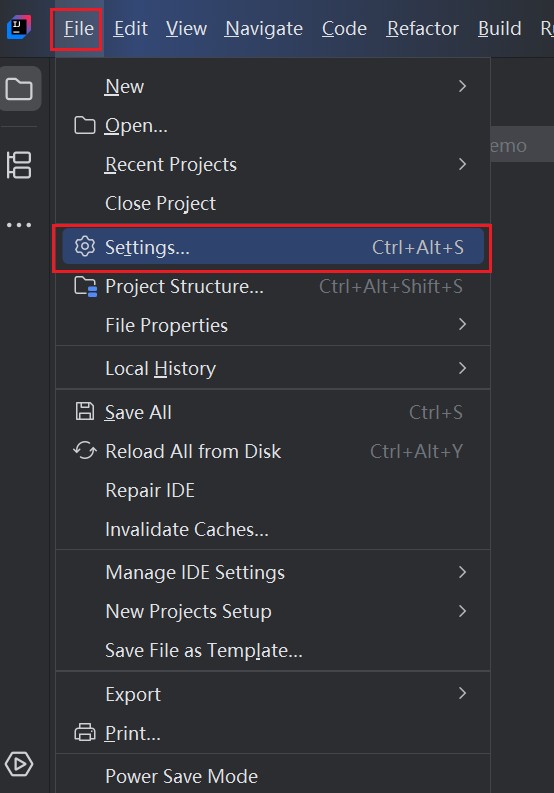一、参数直接在路径中
1.假设请求地址是如下这种 RESTful 风格
hangge 这个参数值直接放在路径里面:
http://localhost:8080/helloworld/张三
|
1 2 3 4 5 6 7 8 9 10 11 12 13 14 |
import org.springframework.web.bind.annotation.GetMapping; import org.springframework.web.bind.annotation.PathVariable; import org.springframework.web.bind.annotation.RestController;
@RestController public class HelloWorldController {
@GetMapping("/helloworld/{name}") public String helloworld(@PathVariable("name") String name) { return "获取到的name是:" + name; }
} |

二、参数跟在 ? 号后面
1.获取参数的基本方法
(1)假设请求地址是如下这种传统方式,参数跟在问号后面:
http://localhost:8080/helloworld1?name=张三
(2)Controller 可以这么获取该参数:
|
1 2 3 4 5 6 7 8 9 10 11 |
import org.springframework.web.bind.annotation.RequestParam; import org.springframework.web.bind.annotation.RestController; import org.springframework.web.bind.annotation.GetMapping;
@RestController public class HelloController { @GetMapping("/helloworld1") public String helloworld1(@RequestParam("name") String name) { return "获取到的name是:" + name; } } |

2.参数没有传递的情况
(1)如果没有传递参数 Controller 将会报错,我们可以使用 required = false 标注参数是非必须的。
|
1 2 3 4 5 6 7 8 9 10 11 |
import org.springframework.web.bind.annotation.RequestParam; import org.springframework.web.bind.annotation.RestController; import org.springframework.web.bind.annotation.GetMapping;
@RestController public class HelloController { @GetMapping("/helloworld2") public String helloworld2(@RequestParam(name = "name", required = false) String name) { return "获取到的name是:" + name; } } |

(2)或者可以指定个默认值,当没有传递参数时自动使用默认值:
|
1 2 3 4 5 6 7 8 9 10 11 |
import org.springframework.web.bind.annotation.RequestParam; import org.springframework.web.bind.annotation.RestController; import org.springframework.web.bind.annotation.GetMapping;
@RestController public class HelloController { @GetMapping("/helloworld3") public String helloworld3(@RequestParam(name = "name", defaultValue = "xxx") String name) { return "获取到的name是:" + name; } } |

3.使用 map 来接收参数
(1)Controller 还可以直接使用 map 来接收所有的请求参数:
|
1 2 3 4 5 6 7 8 9 10 11 12 13 |
import org.springframework.web.bind.annotation.RequestParam; import org.springframework.web.bind.annotation.RestController; import org.springframework.web.bind.annotation.GetMapping;
import java.util.Map;
@RestController public class HelloController { @GetMapping("/helloworld4") public String helloworld4(@RequestParam Map<String, Object> params) { return "name:" + params.get("name") + "<br>age:" + params.get("age"); } } |
(2)下面是一个简单的测试样例:

4.接收一个数组
(1)假设请求地址是如下这种,有多个同名参数:
http://localhost:8080/helloworld5?name=zhangsan&name=lisi
(2)我们可以定义一个数组类型的参数来接收:
|
1 2 3 4 5 6 7 8 9 10 11 12 13 14 15 |
import org.springframework.web.bind.annotation.RequestParam; import org.springframework.web.bind.annotation.RestController; import org.springframework.web.bind.annotation.GetMapping;
@RestController public class HelloController { @GetMapping("/helloworld5") public String helloworld5(@RequestParam("name") String[] names) { String result = ""; for(String name:names){ result += name + "<br>"; } return result; } } |

附:使用对象来接收参数
1.基本用法
(1)如果一个 get 请求的参数太多,我们构造一个对象来简化参数的接收方式:
|
1 2 3 4 5 6 7 8 9 10 |
import org.springframework.web.bind.annotation.RestController; import org.springframework.web.bind.annotation.GetMapping;
@RestController public class HelloController { @GetMapping("/helloworld6") public String helloworld6(User user) { return "name:" + user.getName() + "<br> age:" + user.getAge(); } } |
(2)User 类的定义如下,到时可以直接将多个参数通过 getter、setter 方法注入到对象中去:
|
1 2 3 4 5 6 7 8 9 10 11 12 13 14 15 16 17 18 19 20 |
public class User { private String name; private Integer age;
public String getName() { return name; }
public void setName(String name) { this.name = name; }
public Integer getAge() { return age; }
public void setAge(Integer age) { this.age = age; } } |
(3)下面是一个简单的测试样例:

(4)如果传递的参数有前缀,且前缀与接收实体类的名称相同,那么参数也是可以正常传递的:

2.指定参数前缀
(1)如果传递的参数有前缀,且前缀与接收实体类的名称不同相,那么参数无法正常传递:

(2)我们可以结合 @InitBinder 解决这个问题,通过参数预处理来指定使用的前缀为 u.
除了在 Controller 里单独定义预处理方法外,我们还可以通过 @ControllerAdvice 结合 @InitBinder 来定义全局的参数预处理方法,方便各个 Controller 使用。具体做法参考我之前的文章:
- SpringBoot - @ControllerAdvice的使用详解3(请求参数预处理 @InitBinder)
|
1 2 3 4 5 6 7 8 9 10 11 12 13 14 15 |
import org.springframework.web.bind.WebDataBinder; import org.springframework.web.bind.annotation.*;
@RestController public class HelloController { @GetMapping("/helloworld7") public String helloworld7(@ModelAttribute("u") User user) { return "name:" + user.getName() + "<br> age:" + user.getAge(); }
@InitBinder("u") private void initBinder(WebDataBinder binder) { binder.setFieldDefaultPrefix("u."); } } |
(3)重启程序可以看到参数以及成功接收了:

3.构造多个对象来接收参数
(1)如果一个 get 请求的参数分属不同的对象,也可以使用多个对象来接收参数:
|
1 2 3 4 5 6 7 8 9 10 11 |
import org.springframework.web.bind.annotation.RestController; import org.springframework.web.bind.annotation.GetMapping;
@RestController public class HelloController { @GetMapping("/helloworld8") public String helloworld8(User user, Phone phone) { return "name:" + user.getName() + "<br> age:" + user.getAge() + "<br> number:" + phone.getNumber(); } } |
(2)新增的 Phone 类定义如下:
|
1 2 3 4 5 6 7 8 9 10 11 |
public class Phone { private String number;
public String getNumber() { return number; }
public void setNumber(String number) { this.number = number; } } |
(3)下面是一个简单的测试样例:



